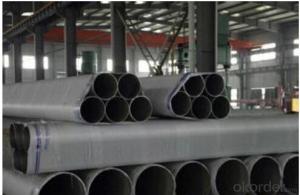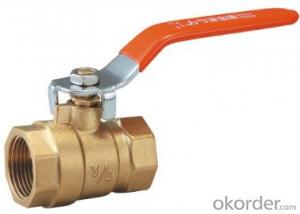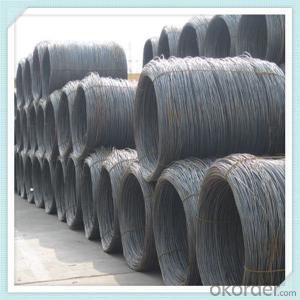Stainless Steel Solder
Stainless Steel Solder Related Searches
Best Paint For Stainless Steel Blanket Insulation For Steel Buildings Primer For Galvanized Steel Foam Filter For Stainless Steel H S Code For Stainless Steel Surface Grinding Wheels For Stainless Steel Surface Grinding Wheels For Hardened Steel Hole Saw For Stainless Steel Paint For Stainless Steel Stainless Steel For BbqHot Searches
Steel Mesh Panels For Sale Price For Stainless Steel Scrap Scrap Price For Stainless Steel Price For Stainless Steel Stainless Steel Tank For Sale Stainless Steel Sheets For Sale Cheap High Tea Sets For Sale Stainless Steel Tanks For Sale Stainless Steel For Sale High Density Fiberboard For Sale Solar Hot Water Collectors For Sale Scaffolding For Sale In Uae Scaffolding For Sale In Ireland Scaffolding For Sale In Houston Type Of Inverter For Solar Price Of Shipping Containers For Sale Types Of Inverter For Solar Stock Price For Aluminum Used Solar Inverter For Sale Steel Mesh Panels For SaleStainless Steel Solder Supplier & Manufacturer from China
Okorder.com is a professional Stainless Steel Solder supplier & manufacturer, offers integrated one-stop services including real-time quoting and online cargo tracking. We are funded by CNBM Group, a Fortune 500 enterprise and the largest Stainless Steel Solder firm in China.Hot Products
FAQ
- Steel wire rod is used in the production of wire shelves as it serves as the primary raw material for manufacturing the wire mesh grids that form the shelves' structure. The steel wire rod is processed and shaped into the desired dimensions and then welded or woven together to create the sturdy and durable wire shelves.
- Steel wire rod is vital in the production of wire forms for packaging purposes. It acts as the foundation material for manufacturing different wire products that find widespread use in packaging applications. One of the key applications of steel wire rod in packaging is its utilization in the creation of wire baskets and racks. These wire forms are commonly employed for storing and transporting goods, providing a sturdy and reliable packaging solution. Steel wire rod is processed and shaped into various forms and sizes to produce these wire baskets and racks, which are then used for organizing and safeguarding packaged items. Furthermore, steel wire rod is also employed in the production of wire hooks and clips. These wire forms are often used to secure packaging materials, such as plastic bags or boxes, to prevent any opening or spillage during transportation. The durability and strength of steel wire rod make it an ideal material for crafting these hooks and clips, ensuring the integrity and security of the packaging. Additionally, steel wire rod finds application in the manufacturing of wire ties, which are commonly referred to as twist ties or bag closures. These wire forms are extensively used in the packaging industry to seal bags, bundles, or packages, providing a simple yet effective means of tightly sealing and protecting items. The flexibility and malleability of steel wire rod allow for easy bending and shaping into twist ties, making it a vital component in their production. In conclusion, steel wire rod plays a critical role in the manufacturing of wire forms for packaging. Its strength, durability, and versatility make it the preferred material for creating various wire products used in packaging applications, including baskets, racks, hooks, clips, and twist ties. By utilizing steel wire rod, packaging solutions can be designed to withstand the challenges of transportation and ensure the safe and secure handling of goods.
- Steel wire rod is used in the manufacturing of wire forms for agricultural fencing by being transformed into various wire shapes and gauges. It can be straightened, cut, and then either woven or welded into the desired fence forms. The high tensile strength of steel wire rod provides durability and resistance, making it suitable for withstanding the pressure and impact that agricultural fencing may encounter.
- Steel wire rod is used in the production of tire reinforcement materials for off-road vehicles by being tightly wound and embedded into the rubber tire. This enhances the strength and durability of the tire, making it suitable for rough and challenging terrains. The steel wire rod provides increased resistance to punctures, improves traction, and helps the tire maintain its shape under heavy loads, ensuring optimal performance and safety in off-road conditions.
- There are several different packaging materials commonly used for steel wire rods. These materials are chosen based on factors such as the length and weight of the wire rods, the level of protection required during transportation, and the ease of handling for both the manufacturer and the end user. Here are some of the most commonly used packaging materials for steel wire rods: 1. Steel Coils: One of the most popular packaging options for steel wire rods is to bundle them into coils. The wire rods are wound tightly into a coil shape using a winding machine. This method provides a compact and secure packaging solution, making it easy to transport and handle the wire rods. 2. Wooden Reels: For longer and heavier wire rods, wooden reels are often used. The wire rods are wound around a wooden reel, providing a larger and more stable packaging option. Wooden reels are commonly used for wire rods that are used in construction and industrial applications. 3. Pallets: Another packaging option for steel wire rods is to stack them on wooden or plastic pallets. This method provides a stable base for the wire rods and allows for easy handling using forklifts or pallet jacks. Pallets are commonly used for bulk shipments of wire rods. 4. Cardboard Boxes: Smaller wire rods or wire rods with specific length requirements may be packaged in cardboard boxes. These boxes provide protection against damage during transportation and allow for easy handling and storage. 5. Plastic Wraps: In some cases, steel wire rods may be packaged using plastic wraps. This method is often used for smaller quantities or when the wire rods need to be protected from moisture or dust during transportation. It is important to note that the choice of packaging material may vary depending on the specific requirements of the wire rod manufacturer and the end user. Factors such as cost, transportation method, and storage conditions can also influence the selection of packaging materials.
- The different transportation methods for steel wire rod include trucking, rail transportation, and shipping via cargo vessels.
- Steel wire rod is used in the manufacturing of wire mesh cable trays as it serves as the primary material for creating the interwoven mesh structure. The wire rod is drawn, stretched, and shaped to form individual wires that are then woven together to create a strong and durable mesh. This mesh structure provides excellent support and containment for cables, ensuring their organized and safe installation in various industrial and commercial settings.
- There are several different types of steel wire rods, including carbon steel wire rods, alloy steel wire rods, stainless steel wire rods, and galvanized steel wire rods. Each type has its own unique properties and is used for various applications, such as construction, automotive, and electrical industries.















































